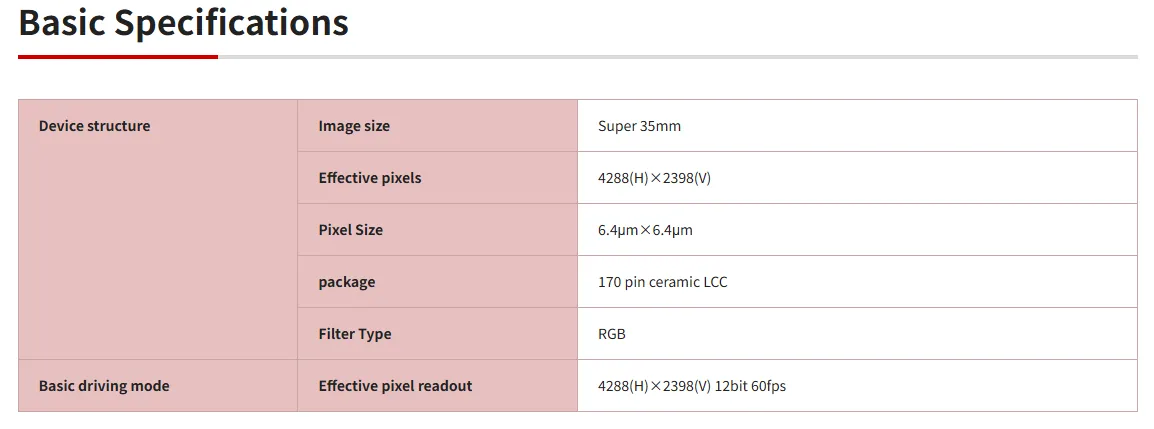
Canon Sets Its Sights on Global Shutter Technology to Rival Sony: A Game Changer on the Horizon!
2024-12-08
Author: Charlotte
Canon's Leap Towards Global Shutter Technology
In an exciting development within the photography world, Canon is taking a significant stride to catch up with Sony by developing a cutting-edge camera sensor featuring global shutter technology. The highly anticipated new sensor, known as the LI5070SA, is designed to cater to the booming cinematic and security camera markets.
Impressive Features of the LI5070SA
This innovative Super 35-sized CMOS sensor will allow filmmakers and content creators to achieve 12-bit DCI 4K video output at an impressive 60 frames per second, all while maintaining a pixel count of 10.3 million. This opens the door for smoother, high-quality visuals that are essential for professional-grade filmmaking.
Market Approach and Future Prospects
While Canon will not market the LI5070SA directly to consumers, the sensor is expected to be sold to other companies wishing to integrate Canon's state-of-the-art technology into their own devices. In the future, however, there may be a chance to see such global shutter sensors in high-end hybrid cameras within just a couple of years.
Canon's Previous Innovations
Adding to its allure, Canon has also previously unveiled the LI5030SA, a 19MP full-frame global shutter sensor that was speculated to be featured in the EOS R1 before Canon decided on a different configuration involving a stacked sensor.
The Competitive Landscape
Global shutter sensors are relatively rare in the mirrorless camera segment, but Sony kicked off this trend by incorporating the technology in its consumer-level model, the A9 III. Additionally, Canon has made waves with its use of a global shutter in the EOS C700 GS PL cinema camera, while the RED brand owned by Nikon continues to lead the charge in this niche with its global shutter offerings.
Advantages of Global Shutter Technology
One of the key advantages of a global shutter is its ability to eliminate the dreaded rolling shutter effect, which often distorts fast-moving objects in typical cameras. This is due to the fact that most sensors capture data line-by-line rather than simultaneously. With a global shutter, every pixel is captured at once, preventing distortions and delivering superior image quality, a significant benefit for high-speed filming.
Challenges of Implementation
However, the implementation of global shutter technology is no easy feat. It requires additional circuitry to be integrated into the sensor, reducing the space available for capturing light with photodiodes. Sony has cleverly utilized a stacked CMOS sensor approach in its A9 III to accommodate this circuitry without compromising the camera's low-light performance or overall image quality.
Future of Stacked CMOS Sensors
As the landscape of camera technology continues to evolve, stacked CMOS sensors are becoming increasingly common, even in mid-tier mirrorless cameras, like Nikon's Z6 III. This trend suggests that other manufacturers may soon join Sony's innovative path, leveraging stacked sensors to introduce global shutter capabilities in their upcoming models.
Conclusion
Stay tuned for more updates as Canon's global shutter sensor makes waves in the industry—this could very well transform the way we capture and experience motion!









 Brasil (PT)
Brasil (PT)
 Canada (EN)
Canada (EN)
 Chile (ES)
Chile (ES)
 España (ES)
España (ES)
 France (FR)
France (FR)
 Hong Kong (EN)
Hong Kong (EN)
 Italia (IT)
Italia (IT)
 日本 (JA)
日本 (JA)
 Magyarország (HU)
Magyarország (HU)
 Norge (NO)
Norge (NO)
 Polska (PL)
Polska (PL)
 Schweiz (DE)
Schweiz (DE)
 Singapore (EN)
Singapore (EN)
 Sverige (SV)
Sverige (SV)
 Suomi (FI)
Suomi (FI)
 Türkiye (TR)
Türkiye (TR)